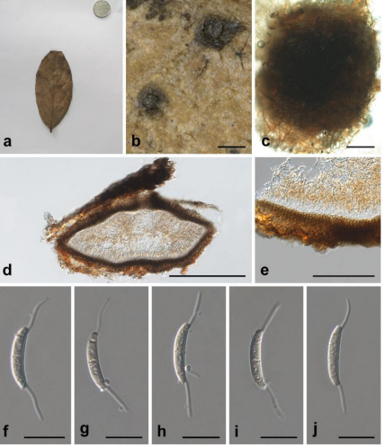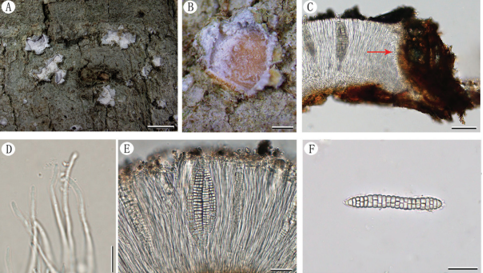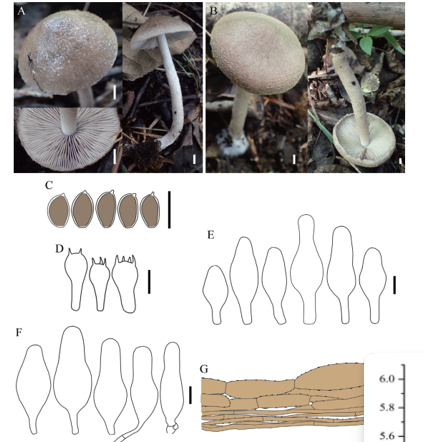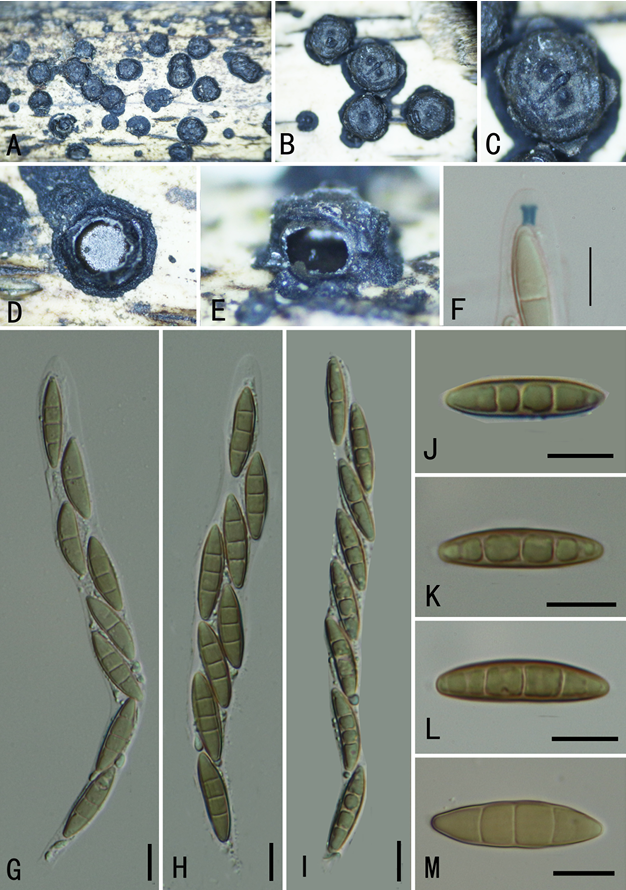Diaporthe constrictospora Y.Y. Chen, A.J. Dissanayake and Jian K. Liu sp. nov. 2020
Index Fungorum number: IF557388; Facesoffungi Number: FoF07853; MycoBank Number: MB836211
Holotype: China, Guizhou Province, Maolan Nature Reserve, saprobic on decaying woody host, April 2017, Y. Y. Chen (HKAS 107534, holotype); ex-type living culture CGMCC 3.20096 = GZCC19-0084; ibid, Guiyang District, Huaxi Wetland Park, saprobic on decaying woody host, July 2017, Y. Y. Chen (GZAAS 19-1784, paratype), living culture GZCC 19-0065.
Morphological description
Saprobic on decaying wood. Sexual morph: Ascomata 190–240 µm diam, black, globose to subglobose or irregular, clustered or solitary, deeply immersed in host tissue. Asci 40–48 µm × 9–11 µm (x = 43 × 8, n = 30), 8-spored, unitunicate, sessile, elongate to clavate. Ascospores 10–12 × 3–4 µm (x = 11 × 4, n = 50), hyaline, elongated to elliptical, two-celled, often 4-guttulate, with larger guttules at center and smaller ones at the ends. Asexual morph: Not observed.Culture characteristics: Colonies covering entire PDA Petri dishes after 10 d at 25 ◦C producing abundant white aerial mycelium, reverse fuscous black.
Habitat: on decaying woody host
Distribution: China
GenBank Accession:
Notes: Two strains representing Diaporthe constrictospora cluster in a well-supported basal clade (ML/MP/BI = 100/100/1.0) and appear to be distinct from other Diaporthe species, and can be easily recognized by their distinctive phylogenetic placement (Figure 1). Since this species is not closely related to any Diaporthe species and we were unable to compare the nucleotide differences in the alignment. Diaporthe constrictospora is introduced as a phylogenetically distinct species (Figure 1).
Reference: Asha J. Dissanayake, Ya-Ya Chen and Jian-Kui (Jack) Liu 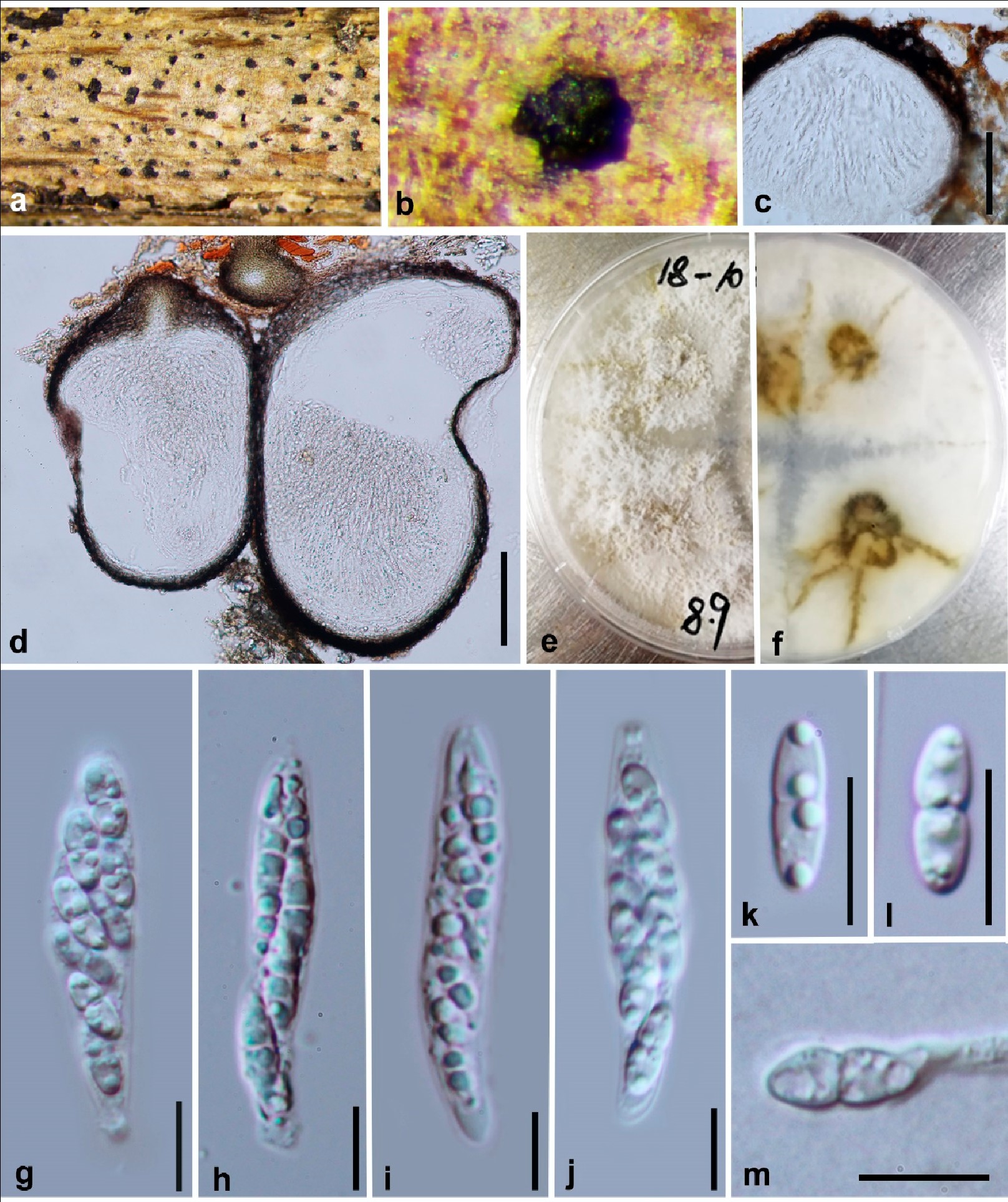
Diaporthe constrictospora (HKAS 107534, holotype). (a,b) Ascomata on host surface. (c,d) Section ofascomata (e) 10 days old culture on potato dextrose agar (-) from above. (f) 10 days old culture on PDA from reverse. (g–j) Asci. (k,l) Ascospores. (m) Germinating ascospore. Scale bars: (c,d) = 100 µm, (g–m) = 10 µm.


